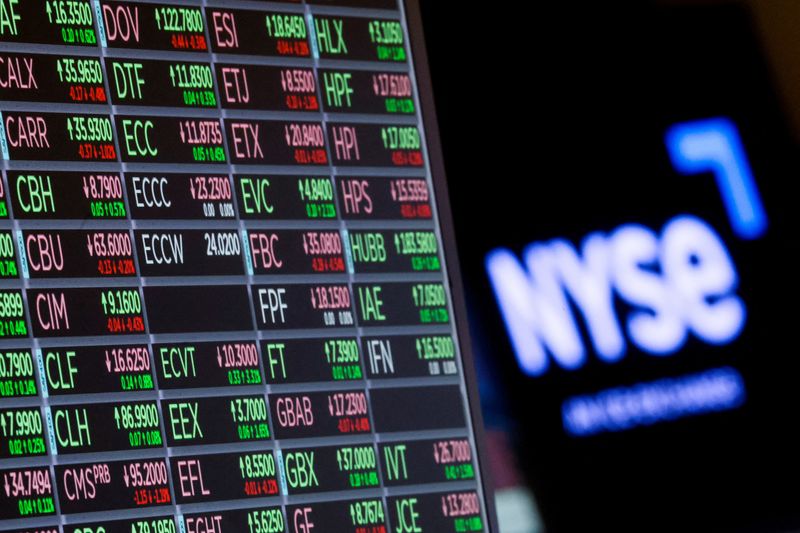By Geoffrey Smith
Investing.com -- Lower gas prices are expected to weigh on July's retail sales number. Target earnings miss expectations again as the retailer struggles with high inventory levels. Tencent reports its first-ever drop in revenue. The U.K.'s inflation rate topped 10% in July due to surging food prices, and Europe's energy crisis grinds on. Here's what you need to know in financial markets on Wednesday, August 17.
1. Retail sales to validate the Walmart rally?
The U.S. will publish retail sales for July at 08:30 ET (12:30 GMT), a day after Walmart’s better-than-expected results drove U.S. equities higher across the board, easing concerns about an imminent recession.
Analysts expect sales to have slowed sharply in the month, rising only 0.1% in absolute terms after a 1.0% rise in June, largely because of the drop in gasoline prices during the month. Attention will also have to be paid to sales excluding gas and automobiles, which rose 0.7% in June.
Economic data so far this week has suggested that the Federal Reserve’s monetary policy tightening is having its desired effect in taking the steam out of the housing market. The sales data will show the extent of the collateral damage on consumer spending, which has held up better than expected so far. Fed Governor Michelle Bowman may comment on the numbers when she speaks at 09:30 ET. The Fed will also release the minutes of its July meeting at 14:00 ET.
2. U.K. inflation tops 10%
Inflation in the U.K. topped 10% in July due to surging food prices, which took over from energy as the main driver of the cost-of-living crisis. Service price inflation also accelerated, and producer prices overshot expectations once again, the annual rate of factory gate inflation rising to 17.1%.
The numbers put extra pressure on the Bank of England to raise interest rates more aggressively, despite clear signs of the economy heading into recession at the end of the year. Interest-rate sensitive two-year note yields rose 22 basis points to 2.37%, while longer-dated Gilt yields rose by over 10 basis points. The pound was left unmoved, while U.K. stocks fell 0.3%.
Earlier overnight, the Reserve Bank of New Zealand raised its key rate by 0.5% for a fourth meeting in a row, but the kiwi fell as markets priced in an earlier end to the RBNZ’s tightening cycle.
3. Stocks set to open lower; Target missed
U.S. stock markets are set to give up most of Tuesday’s gains at the open on increasing concern that the recent rally may have gotten ahead of itself. Walmart’s results suggested that the feared recession may be some way away yet, giving the Federal Reserve more leeway to raise interest rates further.
By 06:15 ET, Dow Jones futures were down 150 points or 0.4%, while S&P 500 futures were down 0.6%, and Nasdaq 100 futures were down 0.8%.
The early focus will be on Target (NYSE:TGT) and Lowe’s (NYSE:LOW), which both report earnings before the opening. Target in particular is under pressure in premarket after earnings again disappointed. The company issued two profit warnings in the last quarter already. Other stocks in focus will include Tencent (OTC:TCEHY), which reported its first-ever decline in revenue in its latest quarter. Overnight, Danish brewing giant Carlsberg (CSE:CARLb) hit its highest level this year on impressive quarterly numbers.
4. Europe’s energy crisis grinds on
Benchmark European natural gas prices hit a new five-month high on Wednesday, as the lack of alternative energy sources in the near term kept a tight squeeze on a market already stretched tight by the absence of Russian supplies.
The front-month Dutch TTF contract, which serves as a benchmark for northwest Europe, rose as much as 5% before reversing, its momentum still strong after the German Economy Ministry denied a Wall Street Journal report that Berlin is ready to keep the country's last three nuclear reactors operating beyond the end of the year.
The extent of the emergency facing the continent was underlined earlier as Uniper (ETR:UN01), Germany’s biggest gas distributor, reported a 12.4 billion euro ($12.6 billion) loss for the first half of the year, due to it having to buy gas on the spot market at sky-high prices to make up for the shortfall of cheaper Russian gas.
5. Crude prices bounce ahead of inventory data
Crude oil prices bounced weakly from their 2022 lows, as the prospect of Iran’s return to world oil markets improved. Goldman Sachs analysts still think a significant rise in exports from Iran this year is unlikely, but the mood music remains bearish for oil prices for now.
By 06:30 ET, U.S. crude futures were up 0.9% at $87.28 a barrel, while Brent was up 0.4% at $92.71 a barrel, supported also by comments from OPEC’s new Secretary-General indicating that the cartel still expects solid demand from China this year, despite setbacks from its Zero-COVID policy.
The U.S. government releases weekly stockpile data at 10:30 ET as usual, after the American Petroleum Institute suggested that crude inventories eked out only their second gain in seven weeks last week.
